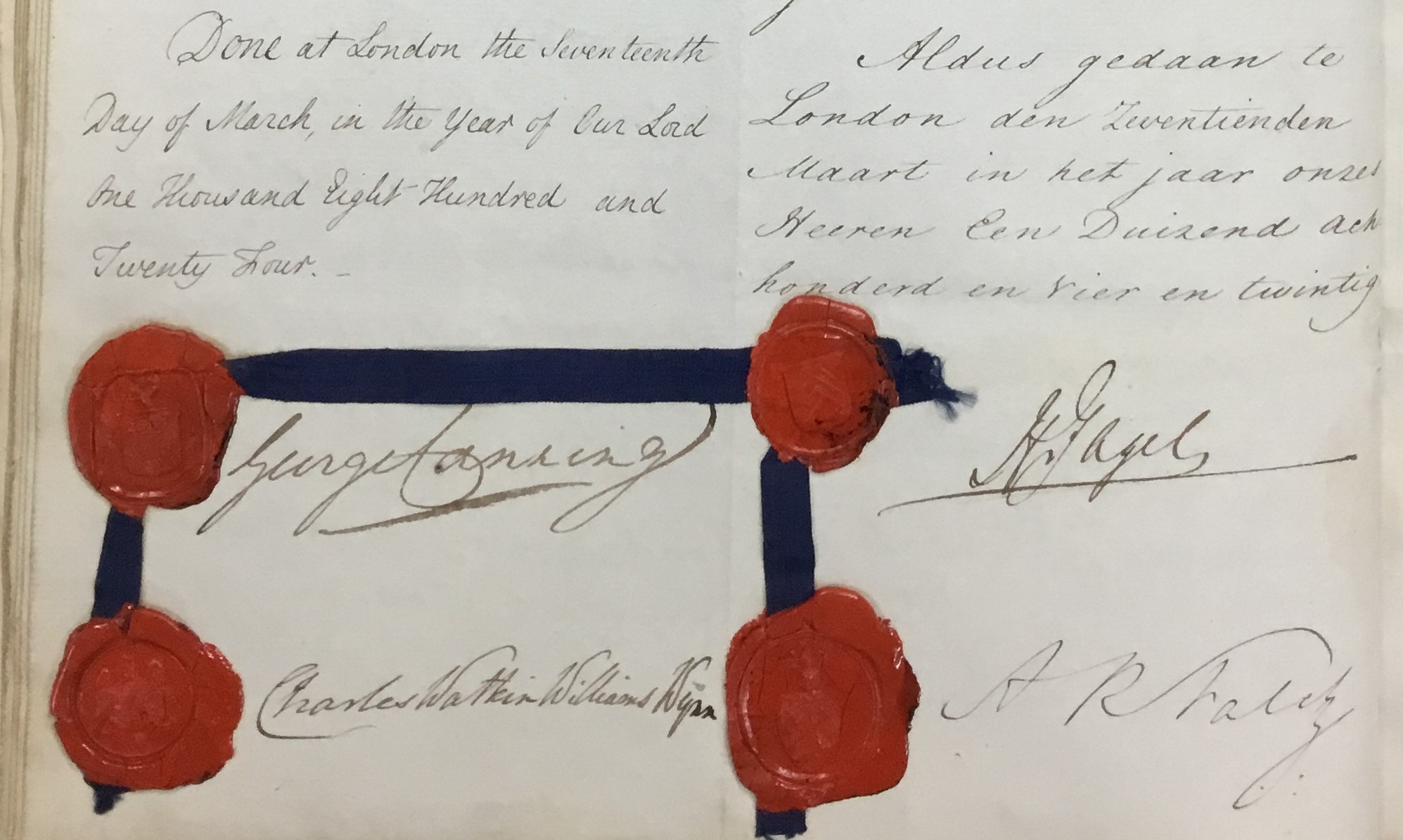As historical anniversaries go, the main event in Sweden in 2024 is the commemoration of ABBA’s victory in the 1974 Eurovision Song Contest with their song Waterloo. For globally minded historians, however, another anniversary seems at least as important: the bicentennial of the 1824 Anglo-Dutch Treaty, also known as the Treaty of London.
The names by which the treaty usually is referred to should not lead us to believe that its relevance or subject matter was confined to Europe. On the contrary, the main purpose of the treaty was to regulate the relations between the Netherlands and the United Kingdom (including the English East India Company) in insular Southeast Asia.
In this respect, the treaty was one of many throughout history in which European powers purported to divide distant parts of the world between them without asking or involving those who lived in these places. Like when Spain and Portugal divided their overseas possessions (as they saw it) between them in Tordesillas in 1494, or when European powers carved up Africa in Berlin in 1884−85, the main purpose was to establish or amend the relations between the European states. Consequently, the impact of the treaties on non-Europeans was of secondary importance if any at all. Moreover, it was frequently seen as imperative to keep actors with local interests and knowledge out of the discussion. As Peter Borschberg of the National University of Singapore pointed out at a recent seminar about the Treaty of London, organized by the Global Diplomacy Network on 12 March 2024, the treaty was consciously designed not to deal with the nitty-gritty of local affairs in Southeast Asia but rather to focus on restoring Anglo-Dutch relations, which had taken a turn during the Napoleonic Wars and its aftermath.
Negotiations in London between the Dutch and British plenipotentiaries began already in 1820 but soon stalled, mainly over the infected issue of Singapore, which the British had founded on the southern tip of the Malay Peninsula in 1819, much to the consternation of the Dutch. Talks resumed at the end of 1823 after the Dutch had dropped their demand that the British abandon the new trading post. The Dutch Minister to London, Baron Hendrik Fagel, who was instrumental in bringing about the successful conclusion of the treaty, instead suggested that the British and the Dutch divide the western part of insular Southeast Asia between them by drawing a line through the Malacca Strait. Sumatra and its islets were to be off limits for the British, who promised not to engage in any treaty relations with the indigenous states or princes on the island. In return, the Dutch promised the same with regard to the Malay Peninsula, thus implicitly recognizing the British claim to Singapore.
A small inconvenience was that the English had existing treaty relations with several states in Sumatra and the Netherlands with several of the sultanates of the Malay Peninsula. The future status of these treaties and relations were not explicitly addressed in the Treaty of London but it seemed to be tacitly understood that they were to become null and void. The British plenipotentiaries nevertheless felt obligated to request assurances from their Dutch counterparts with regard to the future of the Sumatran states and princes with which the British had relations The most important of these was Aceh in north Sumatra. In an exchange of notes on the day of the signing of the treaty, 17 March 1824, the British secured a promise from the Dutch that they would not encroach on Aceh’s independence. Aceh thus continued as a sovereign state for another half-century until the Dutch, in 1873, decided to invade Aceh with the aim of conquering the country, thereby launching a bloody colonial war that would drag on for more than thirty years.
It is sometimes argued that the 1824 Anglo-Dutch Treaty made little difference on the ground in Southeast Asia. That is not true, however, neither in the short or long term. For one thing, the treaty guaranteed free trade, which meant that more than two hundred years of monopolistic Dutch trade practices in the Archipelago were abandoned, at least theoretically (and with the exception of the Moluccas, where the Dutch retained their monopoly on spices). Second, the British acquisition of the old trading hub of Malacca in exchange for Bencoolen on the west coast of Sumatra, together with the Dutch acceptance of Britain’s presence in Singapore, entrenched Britain’s influence in the Strait of Malacca. Third, the treaty set off a flurry of diplomatic negotiations and treaty-making between the colonial powers and the indigenous polities on both Sumatra and in the Malay Peninsula, which drew them into new economic and political relations with the European powers, which eventually resulted in colonial domination.
Perhaps most importantly, in the long-term, the 1824 treaty established a new border that cut right through the heart of the Malay cultural region, which for centuries had been centred around the Straight of Malacca. In doing so, the Treaty of London inadvertently provided the border between the present nation-states of Indonesia on the one hand Malaysia and Singapore on the other. This unforeseen consequence of the 1824 Treaty, negotiated in London by four European diplomats, none of whom ever set their foot in Southeast Asia, was probably beyond the imagination of any of those involved in or affected by the treaty at the time.
Stefan Eklöf Amirell
Stefan Eklöf Amirell is a professor of global history at Linnaeus University and the Pricipal Investigator of the Historical Treaties of Southeast Asia research team.




